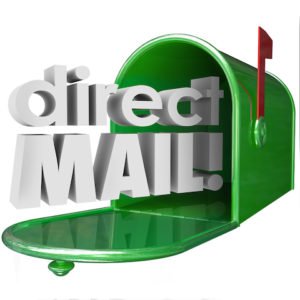Email continues to play an important role for delivering messages directly to your target audience. Email may not be as savvy as social or digital, but email works! Did you know that companies using email to nurture leads generate 50% more sales-ready leads and at 33% lower cost? And nurtured leads, on average, produce a 20% increase in sales opportunitiescompared to non-nurtured leads. (Hubspot)
In addition to lead nurturing and customer acquisition, email marketing is also a great vehicle for insurance marketers to industry to retain customers and boost loyalty. If you are not using email marketing, it’s time to step up and add this strategy to your marketing toolkit. Especially considering that for every $1 spent on email marketing, the average return on investment is $44.25. (Marketing Cloud)
Here are 5 tips to help you get started:
1. Understand your target audience
As in all industries, insurance marketers today are bombarded with data and are collecting as much data as they possibly can. But more often than not, marketers forget to ask, “Am I collecting the RIGHT data?” If it doesn’t provide any insights into who your target audience is, data is, well just data. It clogs up your marketing systems, causes more havoc, more time, and more resources.
Your acquisition dollars should be focused on understanding your audience through a combination of your internal customer and prospect data, as well as third-party demographic data.
Internal Data:Internal data includes anything sitting in a data warehouse, CRM system, or other sources that have not been integrated into your marketing database. Examples of internal data include customer service records, transactional data, credit card purchases, or email.
Consumer Demographics:Data providers aggregate and source these data sets to compile additional consumer insights such as age, gender, and income. Data may be aggregated from sources including public records, phone directories, U.S. Census data, consumer surveys and other proprietary sources. Example of the types of consumer data selects that can be appended to your database include Date of Birth, Home Ownership, Occupation, Gender, Estimated Income, Age, Telephone Numbers, Credit Card, Hobbies, Language Spoken, Purchase Behavior, Lifestyle Interests, Presence of Children, and Investments.
2. Be sure your email list is up to date
Did you know that an average of 30% of subscribers change email addresses annually? Emails go bad and customers move and change their email. Or as is often the case, you may have a huge list of prospects and customers – you know their name, where they live, but have no email address on file.
By using an email append service, you can add these missing email addresses to your customer file. Your customer records, which most likely already consist of names and postal addresses, are matched against a third-party database to produce a corresponding email address.
One of the most often overlooked components of email marketing is email validation and verification. When sourcing new email addresses, a good email append provider will run these addresses through a validation and hygiene process to ensure your newly acquired emails are clean and deliverable. The validation process identifies addresses known to be associated with spam traps, invalid emails and domains, role accounts, complainers, and known hard-bounces. This process also removes duplicate emails and corrects formatting errors.
3. Segment your email list
List segmentation is all about creating personalized emails. The segments can be as large or as small as you want, but the more targeted the segment, the more it will resonate with your customers. Email segmentation doesn’t need to be a daunting task either – simply starting with when a purchase was last made is a start. But the larger your database and the more varied your product portfolio, the more sophisticated your techniques should become.
The most successful email marketers understand the importance of using data to drive focused campaigns. Data about each of your customer interactions must be combined into one consolidated customer view. Any number of segmentation strategies can then be applied to create hyper-targeted lists.
For example, use data such as credit score, income, and products of interest to create targeted segments for particular product offers. These segments can then be further refined by other demographics and data selects such as age. A marketing message geared towards Millennials should be worded differently than one geared towards GenXers or Baby Boomers.
Prospects and customers are much more apt to respond to a personalized offer based on their unique interests and just as quickly may delete one that has no relevance. Take a look at some of these statistics on the benefits of personalized email:
• Personalized emails improve click-through rate by an average of 14% and conversions by 10% [Aberdeen].
• Personalized subject lines deliver 26% higher unique open rates [Experian].
• 94% of companies say personalization is critical to their success [Econsultancy/Monetate].
• Personalized promotional emails see transaction rates and revenue per email more than 6x higher than messages of the non-personalized variety [Experian].
• Thoughts or comments on email marketing and these strategies? Please share them on this new thread: Cost effectiveness of email marketing
4. Send emails according to the buying cycle
Consumers may contact you immediately for a quote or more often than not, they are in the early stages of the buying cycle. They may just be checking out your company for future consideration, may need more information and need to be nurtured, or perhaps they indeed reached out indicating they are ready to purchase. Different messaging should be used for each stage.
Welcome emails – Consumers who first sign up on your website are in the early phase of the buying cycle. Send them a welcome email to set the tone, personalized with their first name of course. Although you may not have other consumer details at this point, an email enhancement provider can provide additional demographic details so these prospects can be nurtured better in the future.
Nurture emails – These emails should provide content and show subscribers what your agency has to offer in terms of products, value adds, services, etc. Nurture emails should be focused on getting the subscriber to take an action such as filling out a free quote form or contacting an agent.
Active emails – These emails should be sent after an email subscriber takes a specific action that indicates he or she is ready to purchase, such as filling out a free quote form on your website. The goal should be to get the prospect to the next stage: purchasing a policy. Use these emails to provide more information, a specific offer or promotion, or more details about the policy of interest.
5. Market to consumers in a state of change
In insurance marketing, timing is everything. Regardless of the type of consumer targeting your marketing plan employs, experts agree that state of change targeting produces results.
The two main types of consumer states of change are life changes and asset changes. Examples of life changes are marriage, divorce, new job, new child, or moving to a new city. Examples of asset changes would be purchase of a new car, boat, or house. Consumers follow a path of fairly predictable life stage events, and since asset changes often follow closely after life changes the two are closely related.
Marketers who can leverage data analytics to identify consumers in a state of change significantly increase the likelihood of attaining a new customer by reaching out at the opportune moment. Once analytic tools identify signals that imply change of state in life or assets, highly targeted emails can be sent when the moment is right.
When it comes to marketing insurance, email should be an integral component of an integrated multi-channel campaign strategy. With the right data and a well-crafted email message, targeting and acquiring new policyholders with email can be the key differentiator between you and the competition.
• Thoughts or comments on email marketing and these strategies? Please share them on this new thread: Cost effectiveness of email marketing
Jim Kaiser is the Vice President of Data Solutions atDataMentors, a provider of robust marketing data, technology, and analytics solutions for the insurance industry. For more on how insurance marketers are using data to create optimal cross-channel interactions and boost revenue, download this free guide. Jim has held executive positions in the database marketing industry including leadership roles at RPM Direct, ChoicePoint, Acxiom and Metromail. While at RPM Direct, Jim was a trusted advisor, helping leading insurance companies drive performance and growth with data-driven marketing solutions. Connect with Jim onLinkedIn.












